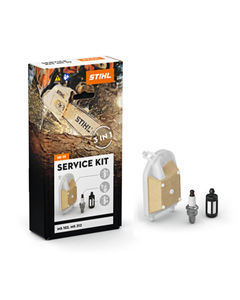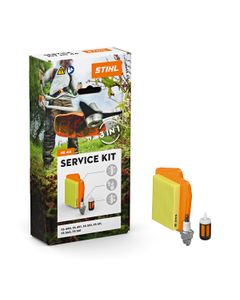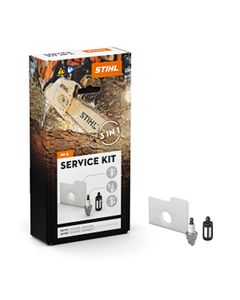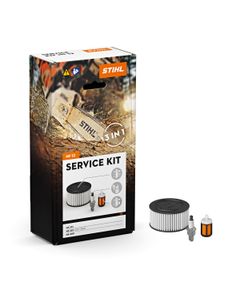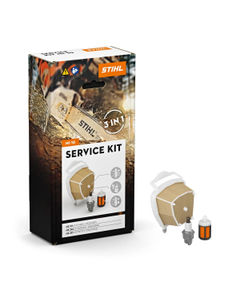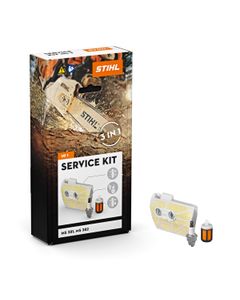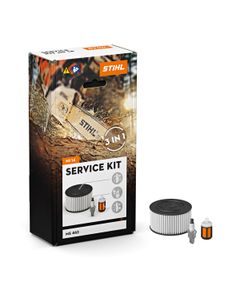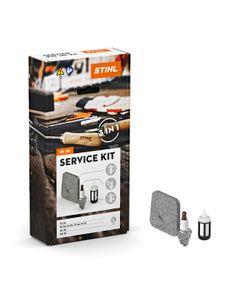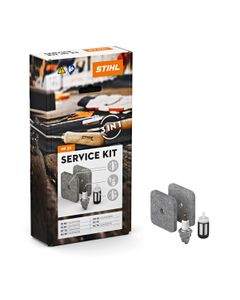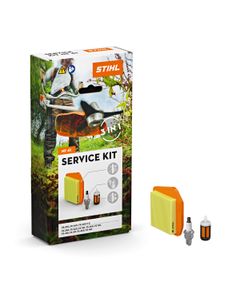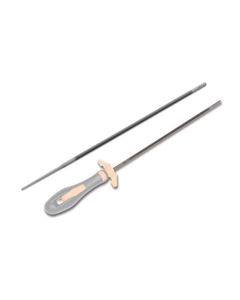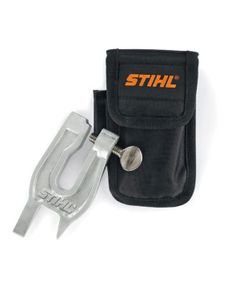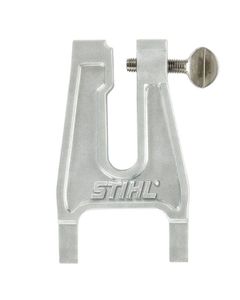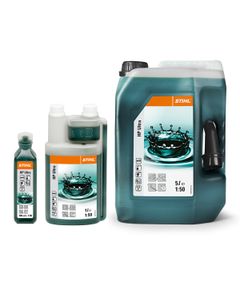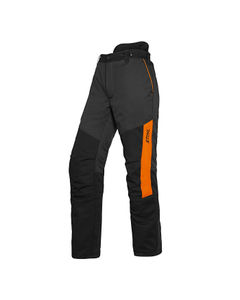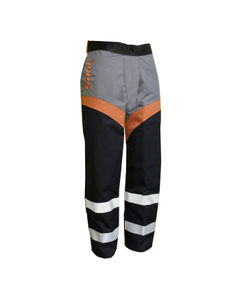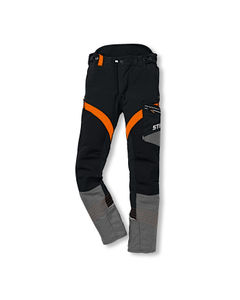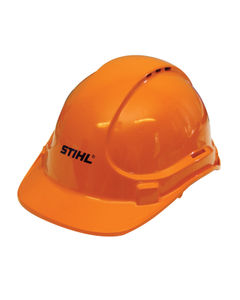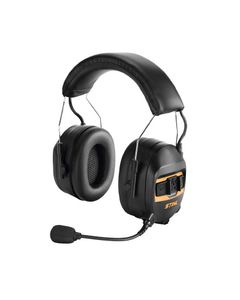Chainsaw Safety Tips: After Using Your Chainsaw
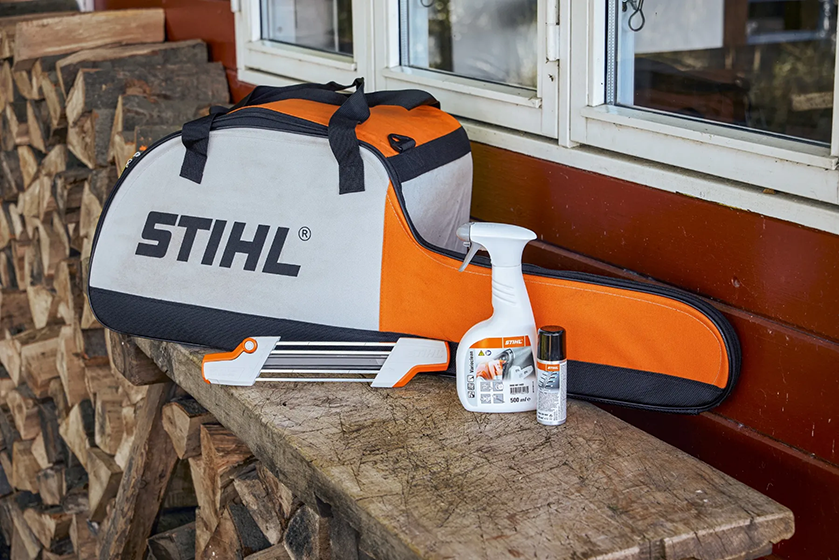
CORRECT AND REGULAR MAINTENANCE = GREATER SAFETY
If you are not looking after your Chainsaw correctly this could not only affect its performance and longevity, but it can also compromise your safety. As a responsible Chainsaw user you should be ensuring your Chainsaw is:
- Well oiled.
- Correctly tensioned.
- Has a sharp chain, with the correct depth gauge.
- Has regular servicing and maintenance. You can easily service your machine at home with our STIHL Service Kits that contain everything you need to do a service.
- Kickback is the most common cause of serious Chainsaw accidents. The chance of experiencing kickback is increased if you have an incorrect depth gauge height, poor work technique, a loose or blunt chain.
OILING
It is important to ensure your Chainsaw chain is lubing correctly to prevent excessive friction between the guide bar and the chain, causing more wear and damage to the Chainsaw and a shorter lifespan.
If there is not enough oil, the chain will not turn as fast as it should, and there is a risk of the entire tool getting overheated and causing serious risk to your safety. We recommend you refill your chain oil tank every time you refill your petrol tank. Generally, your Petrol Chainsaw uses just less than one tank of chain oil for each tank of petrol.
Use the chain lubricating oil recommended by the manufacturer of your machine. Using waste or used oils can damage the chain and cause serious health problems through the oil mists that are thrown off the chain.
An easy way to test if your chain is oiling correctly is to run your Chainsaw with the tip pointed at a piece of clean wood or cardboard without cutting through it. If it is properly oiled, you should see a spray of oil on the wood.
 |
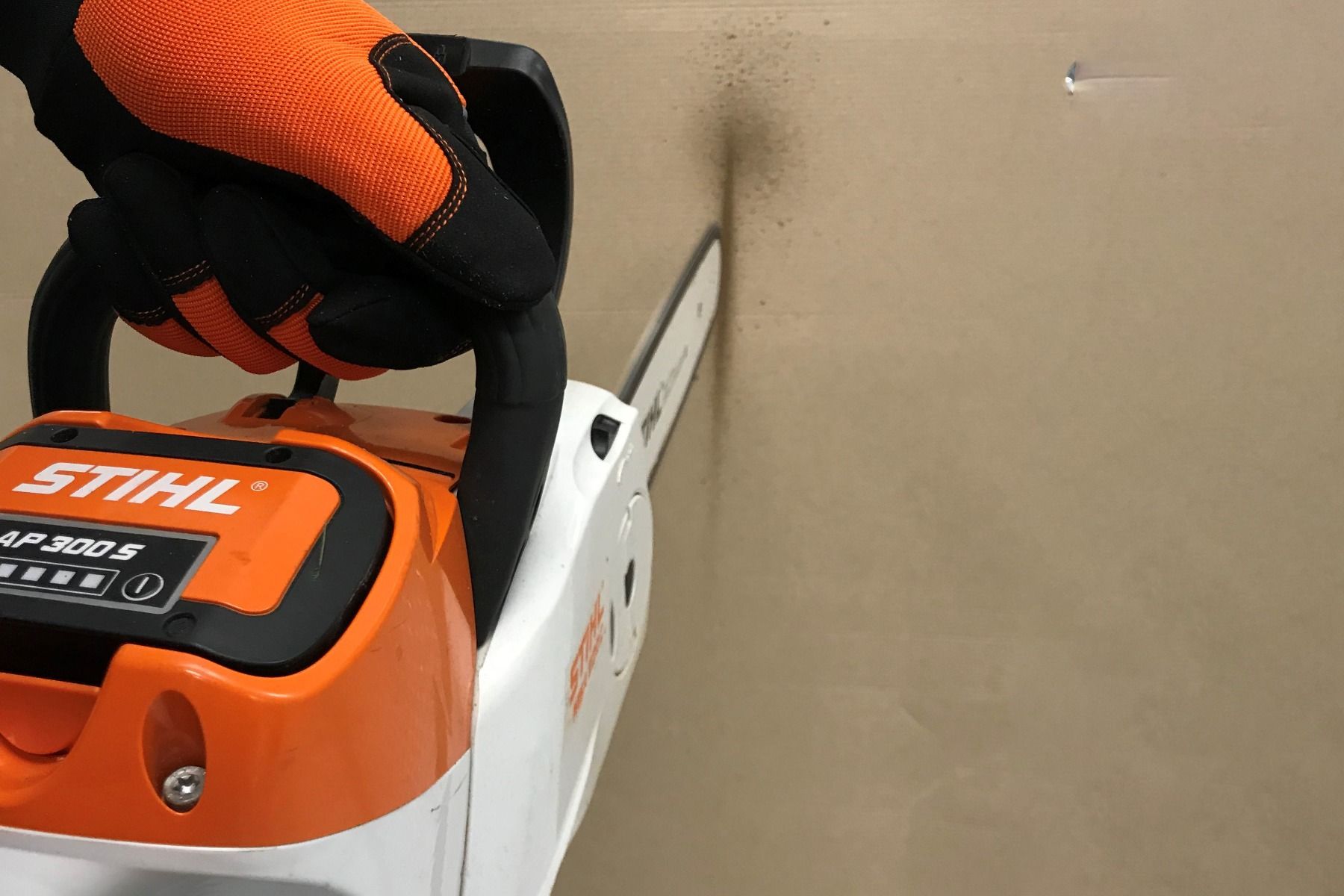 |
 |
 |
Do you know that you can now oil your Chainsaw without causing any negative environmental impacts? STIHL’s BioPlus Chain Oil is derived from plants and has a faster biodegradability.
TENSIONING
Your chain should touch the whole way around the guide bar. Get into the habit of tensioning your chain frequently especially before each use and after each refueling. If you can see that the saw chain no longer fits to the bottom of the guide bar, you need to tighten it.
Here are a couple of quick ways to check if you have the correct chain tension. (Make sure you are wearing protective gloves whenever you work with your chain, even if it is just for a quick check!)
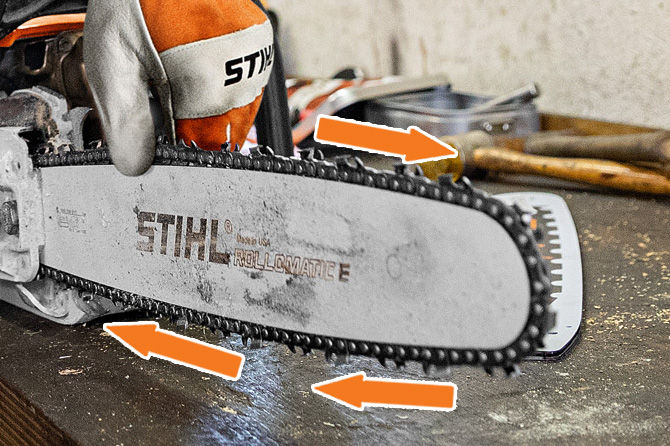
Rotate your chain by hand - if the chain cannot be rotated freely, it is tensioned too tight.
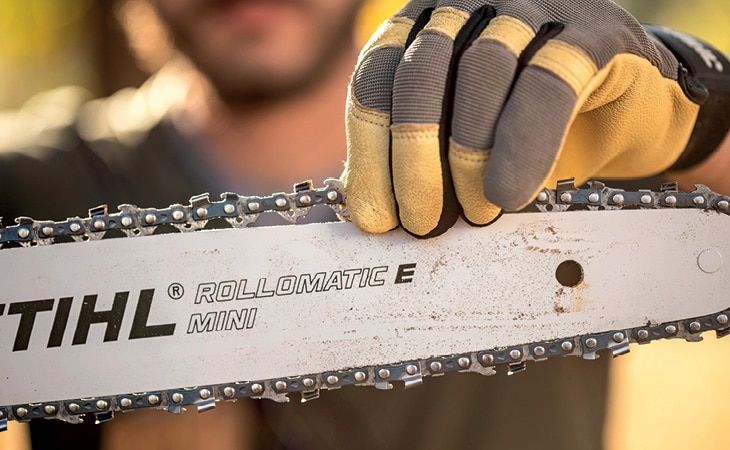
Your chain should also fit snugly to the underside of the bar. Pull the chain off the bottom rail. It should snap back against the bottom rail when it releases. If it snags below the rail instead, it is too loose. A properly tensioned chain should not lift more than around 5mm from the guide bar.

It is also important to re-tension the chain during cutting as the chain stretches. However, your chain will shrink as it cools, so it should be slackened when the work is finished to prevent it from pulling too tight on the guide bar.
Always consult your Owner’s Manual for the correct way to tension your chain.
SHAPRENING
A properly sharpened saw chain cuts through wood effortlessly even with very little pushing. A dull chain is always more prone to kickback. This is because its teeth cannot cut through the wood, resulting in the chain getting stuck and kickback. Using a blunt Chainsaw also forces you to push down on the bar and lean into the Saw, causing increased physical strain and wear. It will also affect the performance of your tool.
If you notice any signs of a dull chain while working with your Chainsaw, it is time for sharpening.
Here’s our blunt chain checklist.
- Examine your saw chain after each use for signs of damage.
- Replace any damaged or worn parts immediately.
- If the wear marks have been reached (see image below), install a new chain.

For easy chain sharpening, we recommend the STIHL Easy File 2-in-1 Filing Guide. This tool simplifies the process of sharpening your saw chain by completing two functions at once – filing both the cutting edges of the teeth and the depth gauge at the same time!
CLICK HERE FOR A COMPREHENSIVE GUIDE ON HOW TO SHARPEN YOUR CHAINSAW
REFUELLING
Before you refuel your Petrol Chainsaw, allow the engine to cool for 5 minutes. Petrol vapour can easily be ignited by a spark or even a hot surface while refuelling your Chainsaw. Never smoke when handling fuel.
STIHL Chainsaws use a mixing ratio of 1 part oil: 50 parts petrol which is 100ml of engine oil for every 5L of petrol. Using high quality oil will preserve the engine, sealing rings and fuel lines.
For longer engine service life, we recommend STIHL two-stroke engine oil, it is specifically formulated for STIHL engines. Mix the engine oil and petrol in a fuel-approved container. Tightly close it and shake to combine the two components. Be careful as you open the container as pressure may have built up.
More refuelling safety considerations:
- Fill the oil tank first to allow the Chainsaw to cool down.
- Never spill fuel on hot motor components.
- If any fuel gets spilt, wipe it instantly from the Chainsaw.
CHECK PPE STATUS AFTER USAGE
Wearing the right Personal Protective Equipment (PPE) protects you from life-threatening injuries, you should also get in the habit of inspecting it thoroughly once you have finished working. You must replace your PPE if it is worn or broken.
SAFE STORAGE AND TRANSPORTATION OF YOUR CHAINSAW
Chainsaws can be dangerous even when they are not being operated, if they are not stored or transported correctly. Follow these tips:

- Before transporting your Chainsaw, ensure that the scabbard (the bar cover) is fitted.
- Always carry your Chainsaw by the front handle with the bar pointed behind you. If pointed forward, you could trip and fall on it.
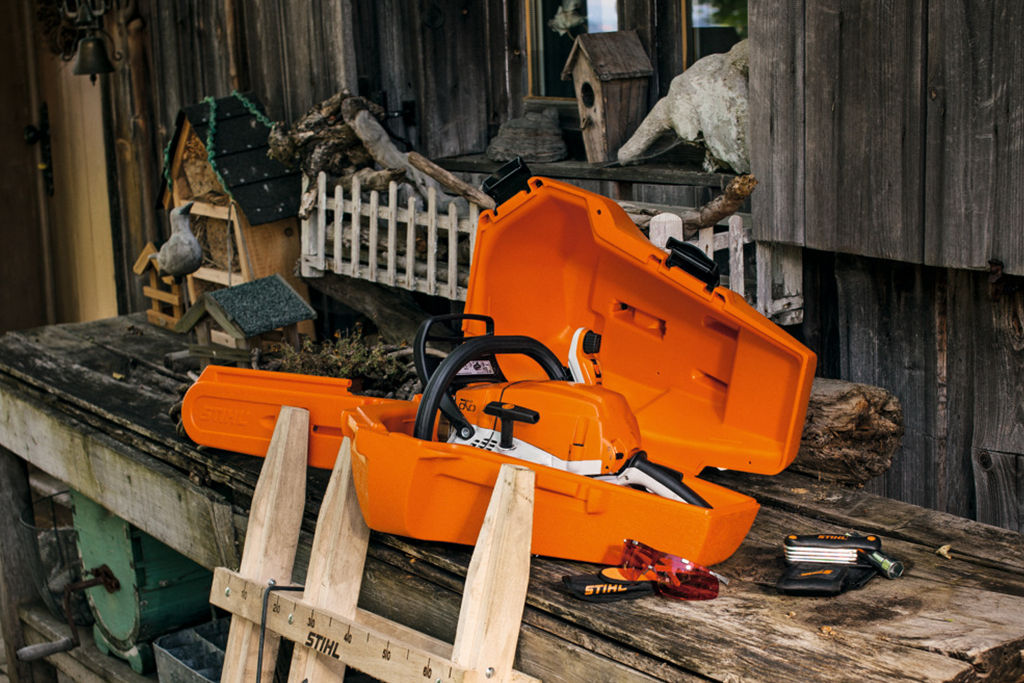
-
To add an extra layer of protection over the scabbard for safer storage and transportation, consider using a carry bag or a carrying case. This is the best way to minimise any risk of injuries.
- Keep your Chainsaw away from children – store your Chainsaw in a locked room or cupboard out of their reach.
It is recommended to keep your Chainsaw indoors. Ideally, your Chainsaw should be stored in a well-ventilated, dry and dust-free environment. Old fuel should be drained before long-term storage to prevent damages on the fuel system components such as the carburettor diaphragms. Keep your oil fresh, we do not recommend using any oil older than 6 weeks.
- STIHL Battery Lawn Mowers (8)
- DIY (1)
- Commercial (1)
- STIHL SHOP Services (1)
- STIHL Chainsaws (20)
- STIHL Linetrimmers & Brushcutters (13)
- Buying Guide (22)
- Lawn Care (12)
- How To Guides (31)
- STIHL Water Blasters & Pressure Washers (8)
- STIHL Hedge Trimmers (9)
- STIHL Battery Tools (18)
- STIHL AP Battery Tools (6)
- Gardening (12)
- STIHL Garden Chippers and Shredders (1)
- STIHL Pole Pruners & Garden Pruners (2)
- STIHL CombiSystem (2)
- STIHL Favourites (5)

